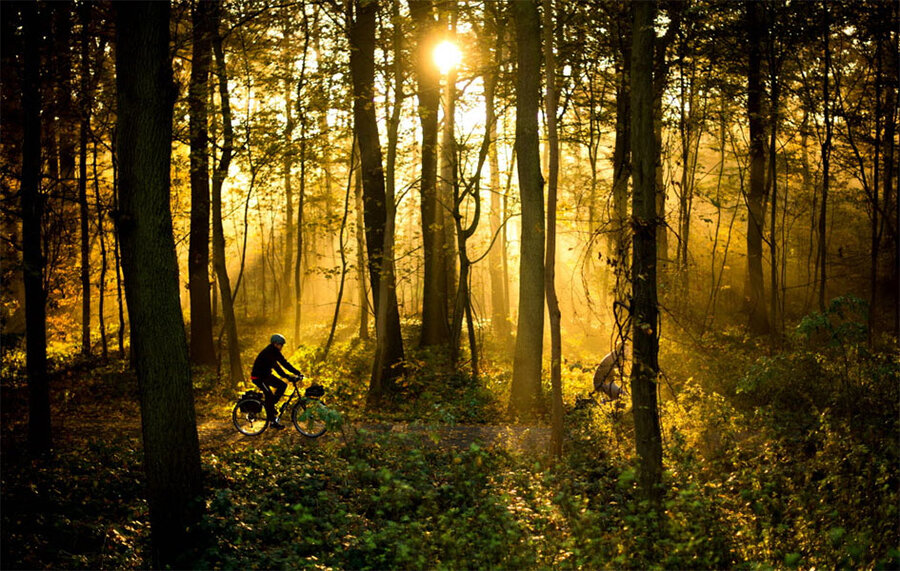Global rate of deforestation has been halved since the 1990s
Loading...
The world’s forests are shrinking, but now at a slower rate. According to the United Nations Food and Agriculture Organization’s Global Forest Resources Assessment (FRA), the rate of deforestation is half what it was in the 1990s. That supports progress noted last year by the Union of Concerned Scientists and reported in this space. (See “Slowing the rate of deforestation,” July 28, 2014.)
Over the past quarter century, forests have seen a net loss of some 319 million acres, an area just larger than South Africa. But between 2010 and 2015, an average of 0.08 percent of the world’s forests was lost each year, down from 0.18 percent each year in the 1990s, according to the report.
“While people have become accustomed to bad news, there is some good news out there,” says Kenneth MacDicken, lead author for the FRA and a senior UN forestry officer.
Forests make up about 30.6 percent of global land area. That wooded land provides a home for animals and a storage locker for carbon dioxide. About 296 gigatons of carbon is stored in the world’s forests. As trees grow, they trap CO2 . When they die, that carbon is released back into the atmosphere.
“They’re an important tool that nature has given us to be able to mitigate against climate change,” says Peter Ellis, forest-carbon scientist with the Nature Conservancy. “Estimates vary,” he says. “But somewhere on the order of 10 to 25 percent of the climate change problem we think can be alleviated through strategies of forest conservation.”
Of course, that’s not all that forests do. “When you get a box from Amazon, it’s made out of cardboard, and that … comes from trees,” says Dr. MacDicken.
Tree products make it onto our dinner tables and shower caddies. Palm oil, much of it harvested in Indonesia, can be found in pizza, ice cream, bread, and a huge variety of beauty products.
Data for the FRA is self-reported by countries and territories under the UN’s jurisdiction. Mr. Ellis is skeptical about the reliability of such data. It can help tell the story of deforestation in individual countries, he says, but monitoring by satellites and other external sources might describe global trends more accurately.
Forests in tropical regions face the worst deforestation, says MacDicken. But in more temperate regions, some countries actually reported a rise in forested land.
MacDicken links this disparity to agriculture, which is more prevalent in tropical forested regions.
Some of the recovery in other regions is from regrowth following abandonment of agricultural clear-cuts. Russia, says MacDicken, had communal agricultural lands that ceased to be economically viable after the collapse of the Soviet Union. Those lands were abandoned and are now covered in regenerated forests.
Brazil, too, holds a vast amount of the world’s forested land. In many ways, the South American nation has been a success story in the face of deforestation.
“Most scientists now agree that it has dramatically, by about 80 percent, reduced its deforestation rate,” says Ellis. He credits both an incentive system and satellite monitoring data to Brazil’s success. But Brazil and other tropical forested countries face economic challenges as well.
“The resource-poor countries, they struggle, just because there’s a cost and sometimes countries just don’t see the benefits to spending the money,” says MacDicken. Furthermore, he says, an incentive system might not be effective without full governmental support.
“It’s hard to imagine, in many countries, how the payments from overseas can be translated ... down to the people who use a machete or an ax or a chain saw or a bulldozer,” MacDicken adds.
One solution he proposes: Adapt agricultural production so that more food is produced on less land. That, he says, could help discourage clear-cutting.
Forests that are selectively logged for timber hold hope, too. A study in Current Biology showed that managed forests could regenerate lost biomass in just seven to 21 years, if left alone.
“The wonderful thing about forests is that they are fairly resilient,” says Ellis. “The best way to get forests to regrow is to leave them alone.”






